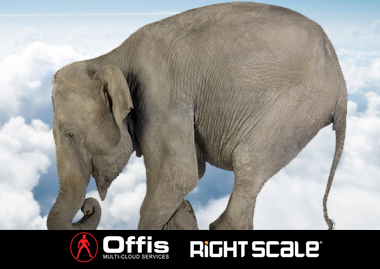Three Cloud Trends Every CIO Should Follow
The world of Cloud Infrastructure continues to evolve very fast. Brad Burrows - Director of Professional Services at Offis sat down with Bailey Caldwell of RightScale and Greg Steel from Offis to discuss which trends CIOs should be watching over the next two years.
Trying to keep up with the cloud can be both exciting and frustrating. No sooner does a CIO settle into one way of thinking or working, than three new concepts pop up demanding their attention. Yet, some of these concepts may create new opportunities to achieve far more with far less—which is the central benefit of cloud computing, after all.
So where should CIOs focus their attention over the next couple of years?
Containers
“The one that you hear about the most these days is containers,” says Bailey Caldwell, Director of Professional Services for RightScale—the leading hybrid and multi-cloud management platform. “The technology's not new; we've been using containers for a long time. We have moved all of RightScale production onto containers and saved a lot of money as a result. And it's improved our ability to execute.”
Caldwell concedes that containers are not a silver bullet. “This is never going to be a one-hammer-can-hit-all-nails environment. Anyone who believes that there is a container-only strategy for any significant consumer of IT services is fooling themselves. Even if there were, the nuance and complexity of applications don't get solved by containers. You're just putting the app in a different, much more scalable environment. You still have to handle all the complexity of software associated with that.”
Automation
Speed and scalability are also big factors for Greg Steel, a senior consultant and solution architect at Offis. “If we take a step back from all of the talking around cloud, there can be a lot of questions about the value of moving a bunch of infrastructure into the cloud, or building a bunch of stuff in a different way. But if you look at what the business needs, [it’s] more agility. That agility translates to delivering applications faster and delivering infrastructure faster, even delivering whole systems faster. The cloud gives us is the ability to do that.”
So what does Steel think will give businesses more of that speed and agility? “Most of the business value is about automation. But to use the cloud to do that, we need to then invest in building automation capabilities on top. And that involves solving typical problems around orchestration, around ‘hands-off’ responsibility, around handling when things go wrong.
Composite Application Architectures
Caldwell expects to see businesses solve these problems by tying together multiple technologies. “I definitely think one of the bigger trends with respect to application delivery is going to be composite application architectures that use some PaaS, some IaaS, and some SaaS capabilities. By doing that, you deliver a solution in weeks that might have taken you a year.”
A composite approach may solve one set of problems, but it can introduce new challenges. “[If] I, as an enterprise, produced a cool new mobile app that uses a SaaS service, some IaaS, and a PaaS capability, the complexity of that environment is very different to provisioning servers and running software on those servers.” Caldwell sees this need driving another major trend. “Because of that complexity, Cloud Management Platforms (CMPs) will continue to increase in the market. The only way you can stitch these things together in any cognisant sense is through a single pane of glass environment like a CMP.”


















